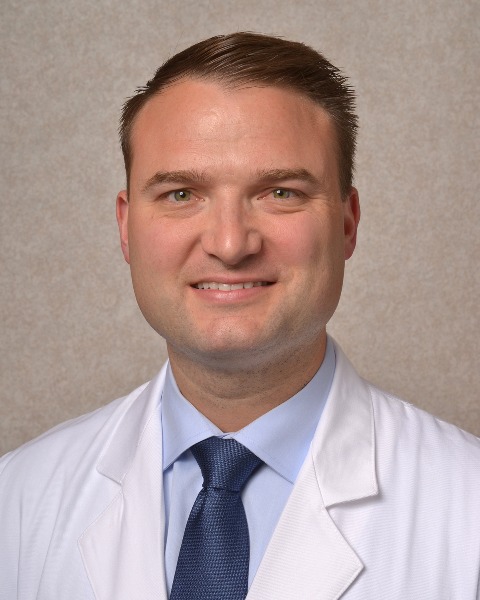Hepato-pancreato-biliary
E229: Surveillance-Associated Anxiety Following Curative-Intent Cancer Surgery: A Mixed Methods Analysis

Natalie M. Bath, MD
Surgical Oncology Fellow
The Ohio State University Wexner Medical Center
Columbus, Ohio, United States
Natalie M. Bath, MD
Surgical Oncology Fellow
The Ohio State University Wexner Medical Center
Columbus, Ohio, United States
Natalie M. Bath, MD
Surgical Oncology Fellow
The Ohio State University Wexner Medical Center
Columbus, Ohio, United States- RK
Rakhsha Khatri, n/a
Clinical Research Assistant
The Ohio State University, United States 
Mary E. Dillhoff, MD
Surgical Oncologist
The Ohio State University Wexner Medical Center
Columbus, Ohio, United States.jpg)
Aslam Ejaz, MD
Surgical Oncologist
The Ohio State University Wexner Medical Center, United States.jpg)
John Hays, MD PhD (he/him/his)
Medical Oncologist
The Ohio State University Wexner Medical Center, United States- AN
Anne Noonan, MBBCh
Medical Oncologist
The Ohio State University Wexner Medical Center, United States - EH
Emily Huang, MD
Colorectal Surgery
The Ohio State University Wexner Medical Center, United States 
Alex C. Kim, MD, PhD (he/him/his)
Surgical Oncologist
UT Southwestern Medical Center
Dallas, Texas, United States
Timothy M. Pawlik, MD, PhD, MPH, MTS, MBA, FACS, FRACS (Hon.), FRCSEd (Hon.)
Surgical Oncologist
The Ohio State University Wexner Medical Center
Columbus, Ohio, United States
Jordan M. Cloyd, MD
Surgical Oncologist
Division of Surgical Oncology, The Ohio State University Wexner Medical Center, Columbus, OH, United States
Columbus, Ohio, United States
ePoster Abstract Author(s)
Submitter(s)
Author(s)
Imaging is an essential component of cancer surveillance following curative-intent surgery, particularly for patients at elevated risk of recurrence. However, surveillance imaging and follow-up visits can cause anxiety and distress for some patients. While this phenomenon has been studied in patients undergoing active cancer treatment and screening, the frequency and severity of “scanxiety” in patients undergoing surveillance after curative-intent cancer surgery is poorly understood.
Methods:
Patients with a history of resected gastrointestinal (GI) or hepatopancreatobiliary (HPB) cancer who presented for routine cancer surveillance were enrolled after undergoing cross-sectional imaging but before meeting with the provider. Distress during the prior two weeks was assessed using the Impact of Events Scale (IES-r) and the Hospital Anxiety and Depression Scale (HADS) (7-questions) surveys. HADS scores above 11 (scale 0-22) and IES-r scores above 24 (scale 0-88) were considered clinically meaningful. Semi-structured interviews were conducted among a convenience sample of patients.
Results:
Among 59 participants, mean age was 63 years old, 52% were male, and 71% married. The most common cancer diagnoses were pancreas (32%), liver/bile duct (20%), and colon/rectum (14%). Mean time since surgery was 31 months. Overall IES-r and HADS scores were 4.1 ± 3.3 and 9.7 ± 11.9, respectively. Domains with the highest burdensome level of anxiety included not being able to avoid getting emotional when reminded (0.8 ± 1.1), reminders bringing back feelings (0.7 ± 0.8), and trying to avoid thinking (0.7 ± 0.9) about surveillance imaging altogether (Figure 1). Preliminary qualitative analysis (n=10 patients) highlighted the unique ways that patients experience surveillance-associated anxiety; the primary reported method of coping was distraction.
Conclusions:
In this cross-sectional study of patients with resected GI and HPB cancers, “scanxiety” was common but relatively mild during routine cancer surveillance. Future research should work on identifying which patients are at highest risk for surveillance-associated distress so that patient-centered interventions can be designed and studied in this growing patient population.
Learning Objectives:
- Characterize scan-associated anxiety in patients who are undergoing surveillance imaging scans following curative-intent cancer surgery
- Identify domains that cause the highest burdensome level of anxiety in patients undergoing surveillance imaging
- Highlight unique ways that patients experience surveillance-associated anxiety
